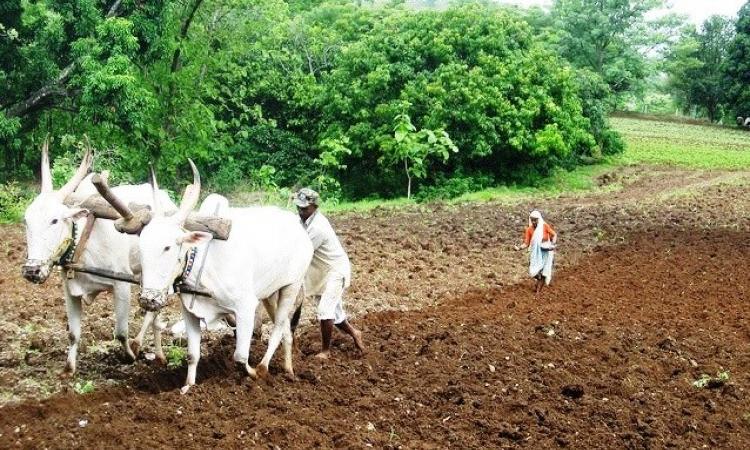
Increase in agricultural productivity is not only dependent on material inputs, but also on farmer’s access to relevant information on crop production and farm management practices. This information is provided through agricultural extension services in India. While India has a long tradition of agricultural extension services, its importance and relevance are growing, especially in the context of an increase in agricultural risk and uncertainty due to climate change and the degradation of natural resources.
While the Indian agricultural extension system consists of a variety of models, schemes, and institutions, public sector extension services continue to dominate. However, the mode of organisation and operation of public extension services varies widely across different states. India’s 10th and 11th Five Year Plans place a strong emphasis on strengthening agricultural extension services to increase agricultural growth by improving yields among farmers. In spite of renewed interest and investment in agricultural extension in India, the coverage and outreach of services continue to be poor.
Access to extension services, a limiting factor
While a few studies have tried to explore the reasons for the poor outreach of extension services, there is no information available on how the existing services address the concerns of the most vulnerable segments of the rural population. The paper “Does caste determine farmer access to quality information?’ published in the journal PLoS ONE presents the findings of a study that explores the role of caste-based inequalities in accessing extension services among farmers in India. The study analysed data from a nationally-representative farm survey, conducted by the National Sample Survey Office, Ministry of Statistics and Programme Implementation of the Government of India.
The study found that:
- Access to extension services is associated with higher crop income across all caste groups. Farmers who have received at least one extension visit have increased crop income by about Rs 12,000 (US$ 205) per year, which is about 36 percent of the crop income of those who did not access any extension services.
- However, this is not common across all caste groups. Farmers from socially-marginalised castes either benefit by a smaller amount or do not benefit at all from extension access. The likelihood of a farmer from a marginalised caste of contacting an extension agent is 26–63 percent lower compared to one from a non-marginalised caste.
- Farmers of the socially-marginalised castes are economically-disadvantaged due to:
- Inferior resource endowment status i.e. lower size of landholdings, poor education, limited sources of off-farm income, and the general income level of the household that limit their access to extension services
- Exclusion from public extension networks due to discrimination
- Regional differences in the quality of extension services and infrastructure
- Thus, one of the major reasons for lower access to formal extension services is the monetary constraint faced by socially-marginalised castes and communities, forming a vicious circle that leads to the persistence of poverty.
- Even within marginalised caste groups, hierarchies exist with scheduled caste (SC) and scheduled tribe (ST) farmers suffering the most due to lack of access to services as compared to other socially-marginalised communities (OSMCs).
More focus on caste-based identities and interactions needed
The paper argues that while agricultural extension services in India are shifting towards decentralising the existing governance framework in order to allocate available resources more effectively, that alone might not ensure inclusion. Ignoring caste identities and inter-caste heterogeneities could pose serious challenges for inclusive growth.
The paper makes some policy recommendations to improve access to extension services among farmers:
- Focused investment in public extension services of the socially marginalised: Making conscious efforts to target states or areas that have higher marginalised populations could help in improving access of farmers from marginalised sections to extension services.
- Changing the definition of programme success: The success of the extension programmes can be measured by the number or share of households from the marginalised castes that have benefitted. A social audit measuring or reporting on whether the resources have reached the marginalised by using specific indicators can be made mandatory for these programmes at the grassroots level.
- “Ungrouping” the castes: The study shows that farmer participation in public extension services is hierarchically unequal across caste groups. Though the OSMCs have not suffered as much as SC and ST farmers from the lack of quality extension access, they have not benefited as much as the non-marginalised. Thus, agricultural extension services need to take into consideration these hierarchies within caste groups and focus on delivering group-specific services based on socio-economic and educational conditions of each caste.
- Increased academic focus on caste-related agrarian issues: There is a need for more research on the role of caste and inter-caste differences on agricultural production and the role played by these in lower marginal returns to extension services.
- Use of non-traditional approaches: Can be explored to increase the outreach of agricultural extension services among the marginalised. Some of the approaches such as forming information links among people of similar status that can be useful to spread information can be used.
- Encouraging use of new technologies: To spread information such as the use of mobile phones
- Exploring the role of civil society and farmers’ organisations: To make these new extension approaches socially inclusive.
A copy of the paper can be downloaded from below: